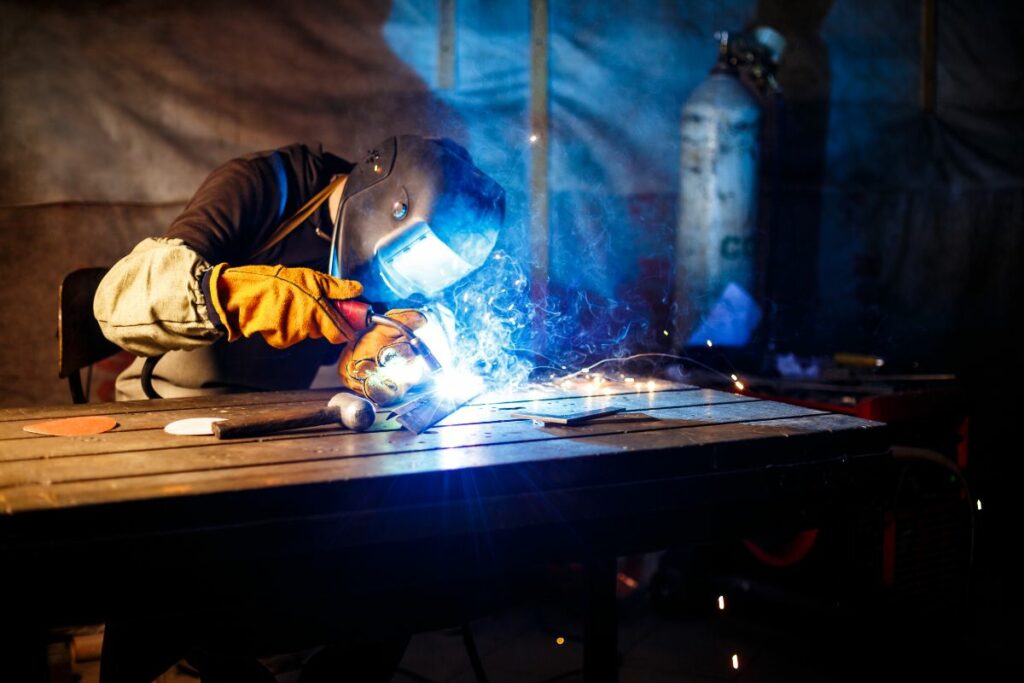
We live in a fast-paced world where environmental concerns have become the talk of the day and industries are increasingly seeking sustainable and eco-friendly practices. One such industry that has been making strides toward environmental conservation is welding. Traditionally, welding has been associated with intense heat, heavy machinery, and metal fabrication, often seen as a significant contributor to environmental degradation. However, a paradigm shift is underway as welding techniques are being harnessed to promote sustainability through the use of recycled materials.
Welding is widely used in construction, manufacturing, and infrastructure development. While it plays an indispensable role in modern society, traditional welding practices come with environmental challenges. The high energy consumption, production of greenhouse gases, and generation of waste are some of the key concerns associated with conventional welding methods.
The high demand for metals in various industries has led to excessive mining and extraction activities, which further deplete natural resources and cause ecological damage. Additionally, the disposal of metal scraps and unused materials from welding projects contributes to the growing problem of landfills and environmental pollution.
Recognising the need for sustainable practices, the welding industry is now turning towards recycling as a viable solution. By adopting recycling techniques and utilising recycled materials, welders can significantly reduce their environmental impact.
One of the most effective ways welders are contributing to environmental conservation is by recycling metal scraps. Instead of discarding leftover metals and offcuts, these materials can be collected, sorted, and processed for reuse. Recycling metal not only minimises waste but also reduces the demand for virgin metals, thereby lessening the need for resource-intensive mining operations.
In welding projects, not all materials need to be brand new. Reclaimed materials, salvaged from old structures or industrial equipment, can often serve just as well as newly manufactured ones. By incorporating reclaimed materials into welding projects, professionals can extend the lifespan of existing resources and divert materials away from landfills.
A circular economy approach in welding involves designing products with recycling in mind. By considering the eventual disassembly and recycling of welded components, materials can be more effectively reused, reducing waste and conserving resources. This shift towards a circular welding economy encourages manufacturers and designers to think long-term and prioritise sustainability.
Meanwhile, using recycled materials in welding brings about many advantages. Some of them are:
Recycling metals typically requires less energy compared to extracting and refining virgin materials. By utilising recycled metals, welders can significantly reduce their carbon footprint and conserve valuable energy resources.
Using recycled materials in welding results in lower emissions of greenhouse gases and harmful pollutants. This plays a vital role in combating climate change and improving air quality.
Recycling and reusing materials help in preserving finite natural resources like iron ore, aluminum, and copper. As these resources become scarcer, the importance of conservation becomes ever more critical.
Welding with recycled materials not only benefits the environment but can also lead to cost savings for businesses. Recycled materials are often more cost-effective, contributing to reduced production expenses.
While welding with recycled materials presents numerous environmental advantages, there are also challenges that need to be addressed. Quality control, material purity, and ensuring proper collection and processing of scrap are some of the hurdles the industry must overcome. Additionally, raising awareness and encouraging more businesses and welders to adopt sustainable practices remain essential to promoting positive change.
By embracing recycling and utilising recycled materials, the welding industry is actively reducing its ecological footprint and moving towards a more sustainable future. As technology and practices continue to evolve, the potential for welding to contribute to environmental conservation will only grow stronger. Through collective efforts, we can create a cleaner, greener world while still building and manufacturing the essential structures and products that drive our society forward.